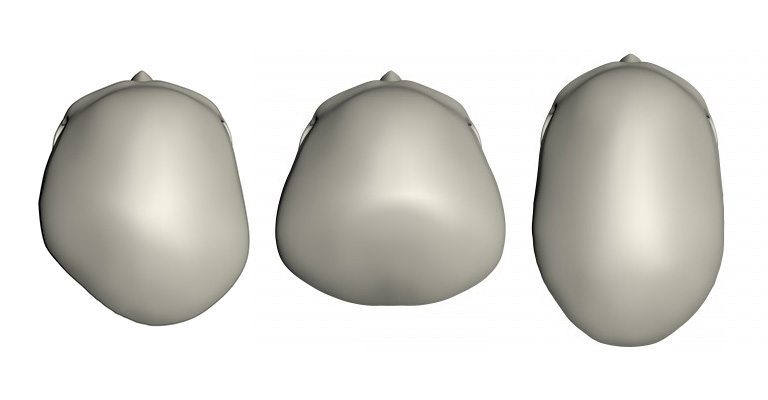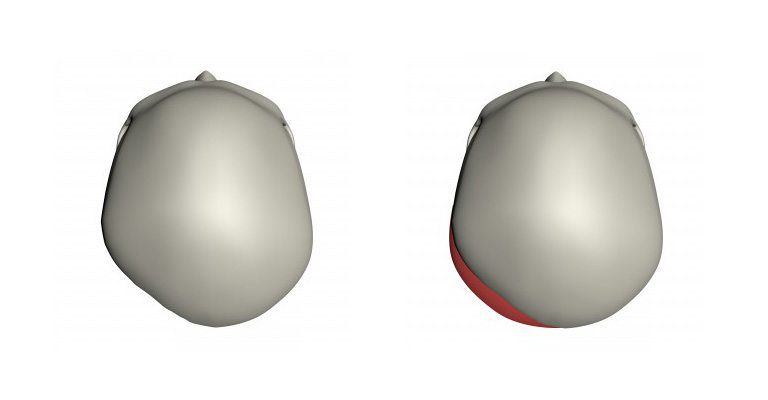Plagiocephaly (an asymmetrical head), scaphocephaly (a long narrow head) and brachycephaly (a short wide head) can occasionally cause problems for adults.
These conditions are most commonly seen in children. They may be due to positional moulding or less commonly conditions such as craniosynostosis where one or more of the sutures in the skull fuse prematurely. Craniosynostosis is usually treated in infancy and positional plagiocephaly generally gets better with simple positioning techniques. Rarely positional plagiocephaly does not completely resolve and occasionally craniosynostosis is not diagnosed until adulthood. Although these conditions do not as a rule cause functional problems in adults, some people are very concerned about an unusual head shape.

Left to right, Plagioceophaly, Scaphocephaly, Brachycephaly.
Simple moulding techniques and helmet therapies do not work in adults and the surgery used in children to reshape the skull carries very high risks in adulthood. Although it is not possible to undertake major skull reshaping surgery in adults, the situation can often be improved by reshaping the outer layers of the skull (burring) or by inserting implants to improve skull shape. Small irregularities can be treated with fat transfer.
Frequently Asked Questions
- Preformed implant such as Medpore
- Bone cements such as BoneSource
- Custom-made implants made from titanium or PEEK

Diagram demonstrating how a custom made implant can correct occipital plagiocephaly.
Deciding on the best treatment generally starts by undertaking a CT scan. From this, a diagnosis of the cause of skull asymmetry can be made. The CT scan also gives information about the thickness of the skull bone and whether or not it is possible to correct the asymmetry or abnormal shape by burring techniques. Information from the CT scan also allows the planning and construction of custom made implants.
These techniques are not suitable for everybody, but can provide an effective treatment in some situations. The major disadvantage of inserting implants is the need to place an incision on the scalp, which inevitably results in a scar. Usually, the scar can be placed in an area where it is unlikely to be very noticeable.
